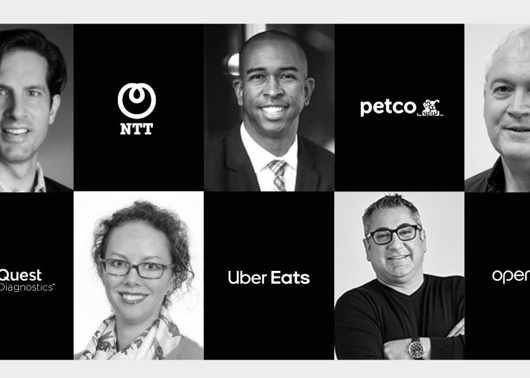Digitally Native Vertical Brands, Exist Online And Offline!
I stepped into the Wholefoods in Uptown, Dallas, and as an avid Wholefoods shopper, I first hand witnessed the integration of Amazon Prime benefits at Wholefoods merchandise. The WF range is vast, I buy my vegan vitamins and organic goods from there. At exit, I swiped with my USA prime account and received almost 10% off the bill. A lot of the goods had a topper Amazon Prime discount. This is one such example of Wholefood’s acquisition by Amazon. A real experience of online and in store shopping experience.
Digitally native vertical brands are seemingly taking over, as its typically formed and builds itself online. But in practicality, it’s a phase in the journey of true marketing. D2C is the starting off point for newer, lesser established brand names today, fully appreciating the hype of massive online traction and lower cost of going to market. However, with time if you really want to appeal to mass, retail partnerships, physical stores and media is still the optimal success recipe. For context, say the Dollar Shave Club, which is part of the Unilever ecosystem now. Did you hear about it prior to Unilever’s purchase in 2016 as disruptor to the men’s shaving & grooming needs? Obviously, Unilever also saw mutual growth of its data, systems and processes that could be applied across its portfolio. Think another. Glossier, in fact on the top list of DNVBs to watch, continues to drive up social ratings and stir up the beauty market in the USA. For the most part, the brand was digital, till in 2016 Glossier opened its first store in SoHo NYC, then Melrose LA, Notice this!
In banking and automotive sectors, almost 80% of the research, happens online (Google sources). But it’s naïve to think that all our category purchases take place online. People do want to see a mortgage specialist, and get the best APR based on their banking relationship. Similarly, as consumers we prefer to test drive the shortlisted brand of the car and experience the gadgetry around it. Of course, there is huge critical part of the online journey that should be attributed to retail experiences. Specifically, the research led attribution to the final sale.
Therefore, can we really say that the digital only, online commerce brands are the holy grail as the immense digitization takes place across the board? It really depends on the category.
The modern approach of commerce focuses on user experience at every touch point both physical and online. Plus, users, behave differently, according to their ages, and preferences, life stages.
According to BigCommerce research,
- Only 9.6% of Gen Z reports buying items in a physical store –– considerably less than their older generations (Millennials at 31.04%, Gen X at 27.5%, and Baby Boomers at 31.9% respectively). Not surprising!
- Gen Z also spends little on products they find from Facebook –– 11.8% compared to Millennials at 29.39%, Gen X at 34.21% and Baby Boomers at 24.56%. Can we say Gen Z, are not targetable at the usual portals anymore?
- Both Millennials and Gen Z spend most of their shopping dollars on products they find on Instagram and Snapchat. I am a millennial myself and I can surely say, that it’s easier to discover the lesser known DVNBs, on Snap or IG.
Therefore, different generations, different expectations. It’s fluid. I believe, that connected commerce is the best way to tackle the practice.
- Customer facing innovation and experimentation is critical to success of digital and physical worlds, if the consumer notices utility and convenience.
- The truest enabler of change is also when companies decide to invest in automation of core employee facing systems to connect the trail of digital and physical data and experiences left behind.
- Using the relevant technologies and partnerships with AI, proximity intelligence and data management across marketing, retail, and digital systems.
- Bringing customer segmentation of the different age segments with personalization of most the compelling experience where it may be, retail or ecommerce.
We need to topple the model over its head and use both an internal-external and external-internal narrative to build the best in class structure that truly connects. It takes courage, investment, continued passion to experiment, derived from truly consultative business thinking.
At Mindshare, we consult with brands around connected commerce to address the important hurdles and create recommendations. Following are some areas of our expertise:
- Setting up the architecture and systems that read from one another, so it is easier to connect user journey online to retail journey offline. Several brands are yet to have a truly optimized mobile experience, and analytics connected to marketing technologies. Resulting in lost data, and assumptions of who owns “what”.
- Payment gateways such as Android and Apple Pay not being fully integrated with certain cards, or online checkpoints as an option.
- Data security and safety, where the consumers are sometimes or often reluctant to check out from small – medium sized marketplaces. E.G. the same newer digital native vertical brands. Fashion is potentially the most common category here especially on social portals.
- Loyalty programs connected to online and offline experiences/purchase (that provide true benefit).
- A 360 approach that focuses on local and varied preferences, with true value and offers based on local occasions. Again, those that solve for consumer needs, will truly have competitive advantage.
Categories, in Food, Banking, and E-Commerce do the above somewhat well in providing a frictionless experience. The ability to search and compare products, use saving and loans calculators, showcasing dynamic product availability and prices, and loyalty programs that really work. In Middle East, in my experience, MAF, Amazon, SharafDG Online, Al Tayer, EMAAR, are on a right track, providing value, offers, online and offline, easy payment wallet check-outs, however the regional category size is vast. Therefore, ensuring consumer stickiness, loyalty and increased share of wallet at least from outside-in approach.
The future of DNVBs, as part of retail relies, on connected human experiences, and commerce. People based marketing where ever they are. This means, using the systems, and leveraging connectable technologies for smarter decisions with AI, intelligence to deliver on experiences that delight, with a channel agnostic brand experience. Both outside-in and inside-out!





